 | ||
Similar Meuse, Embankment dam, Dujiangyan irrigation system, Thorp Mill, Cascade Range | ||
Rectanguler weir civil engineering lectures notes
A weir /ˈwɪər/ is a barrier across the horizontal width of the river that alters the flow characteristics of the water and usually results in a change in the vertical height of the river level. There are many designs of weir, but commonly water flows freely over the top of the weir crest before cascading down to a lower level.
Contents
- Rectanguler weir civil engineering lectures notes
- Etymology
- Function
- Flow measurement
- Control of invasive species
- Watermills
- Flood control and altering river conditions
- Drawbacks
- Common types of weir
- Broad crested weir
- Compound weir
- V notch weir
- References
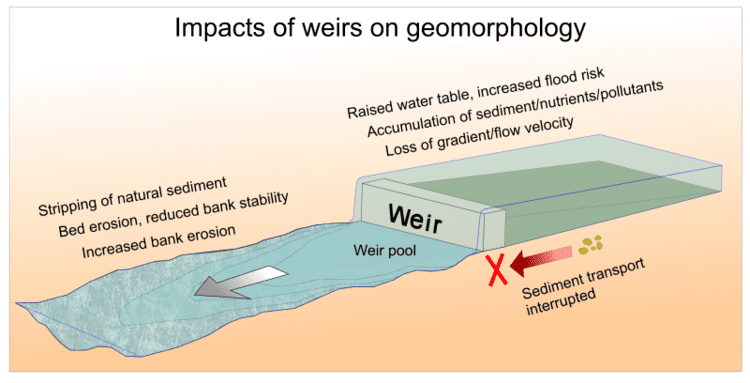
Etymology
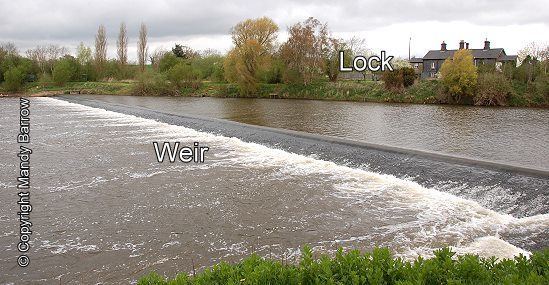
There is no set definition as to what constitutes a weir and the English Dictionary simply defines a weir as a small dam, likely originating from Middle English were, Old English wer, derivative of root of werian, meaning "to defend, dam".
Function
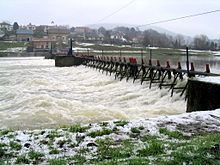
Weirs are commonly used to prevent flooding, measure discharge and help render rivers navigable. In some locations the terms dam and weir are synonymous, but normally there is a clear distinction made between the structures. A dam is usually specifically designed to impound water behind a wall, whilst a weir is designed to alter the river flow characteristics. A common distinction between dams and weirs is that water flows over the top (crest) of a weir or underneath it for at least some of its length. Accordingly the crest of an overflow spillway on a large dam may therefore be referred to as a weir. Weirs can vary in size both horizontally and vertically, with the smallest being only a few inches in height whilst the largest may be hundreds of metres long and many metres tall. Some common weir purposes are outlined below.
Flow measurement
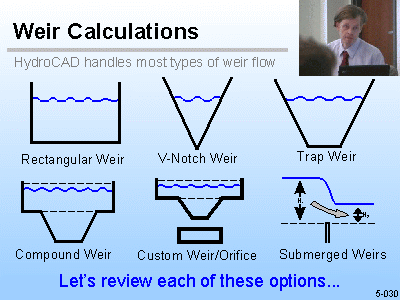
Weirs allow hydrologists and engineers a simple method of measuring the volumetric flow rate in small to medium-sized streams/rivers or in industrial discharge locations. Since the geometry of the top of the weir is known and all water flows over the weir, the depth of water behind the weir can be converted to a rate of flow. However, this can only be achieved in locations where all water flows over the top of the weir crest (as opposed to around the sides or through conduits/sluices) and at locations where the water that flows over the crest is carried away from the structure. If these conditions are not met it can make flow measurement complicated, inaccurate or even impossible.
The discharge calculation can be summarised as:
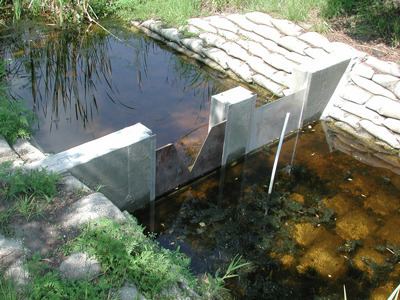
Where
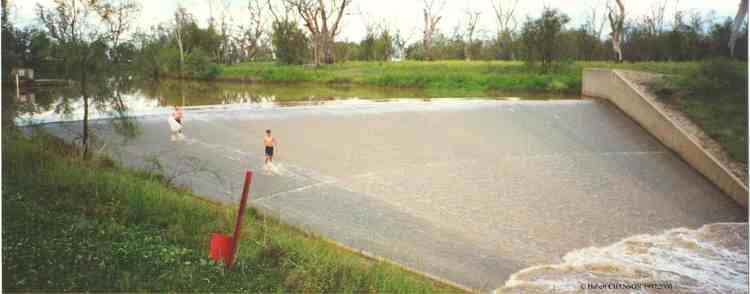
However this calculation is a generic relationship and specific calculations are available for the many different types of weir. Flow measurement weirs must be well maintained if they are to remain accurate.
Control of invasive species
As weirs are a physical barrier they can impede the longitudinal movement of fish and other animals up and down a river. This can have a negative effect of fish species that migrate as part of their breeding cycle (e.g., Salmonids), but can also be useful as a method of preventing invasive species moving upstream. For example, weirs in the Great Lakes region have helped to prevent invasive sea lamprey from colonising further upstream.
Watermills
Mill ponds are created by a weir impounding water that then flows over the structure. The energy created by the change in height of the water can then be used to power waterwheels and power mill and other equipment.
Flood control and altering river conditions
Weirs are commonly used to control the flow rates of rivers during periods of high discharge. Sluice gates (or in some cases the height of the weir crest) can be altered to increase or decrease the volume of water flowing downstream. Weirs of this purpose are commonly found upstream of towns and villages and can either be automated or manually operated. By slowing the rate at which water moves downstream even slightly a disproportionate effect can be had on the likelihood of flooding. On larger rivers a weir can also alter the flow characteristics of a river to the point that vessels are able to navigate areas previously inaccessible due to extreme currents or eddies. Many larger weirs will have features built in that allow boats and river users to 'shoot the weir' and pass up/down stream without having to exit the river.
Drawbacks
Common types of weir
There are many different types of weirs and they can vary from a simple stone structure that are barely noticeable, to elaborate and very large structures that require extensive management and maintenance.
Broad-crested weir
A broad-crested weir is a flat-crested structure, where the water passes over a crest that covers much or all of the channel width. This is one of the most common types of weir found worldwide.
Compound weir
A compound weir is any weir that comprises of several different designs into one structure. They are commonly seen in locations where a river has multiple users who may need to bypass the structure. A common design would be a one where a weir is broad-crested for much of its length, but has a section where the weir stops or is 'open' so that small boats and fish can traverse the structure.
V-notch weir
A notch weir is any weir where the physical barrier is significantly higher than the water level except for a specific notch (often V-shaped) cut into the panel. At times of normal flow all the water must pass through the notch, simplfiying flow volume calculations, and at times of flood the water level can rise and submerge the weir without any alterations made to the structure.
